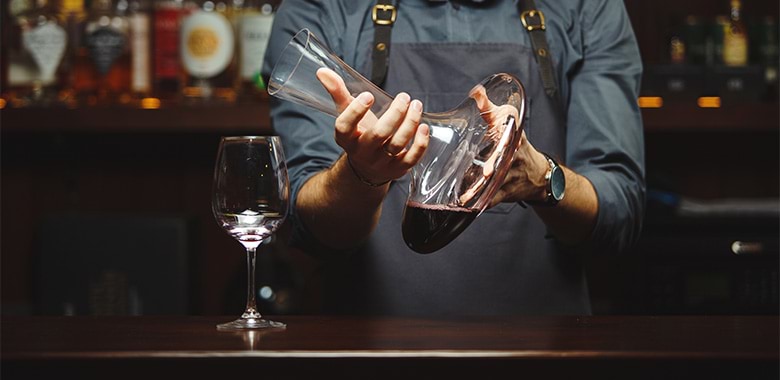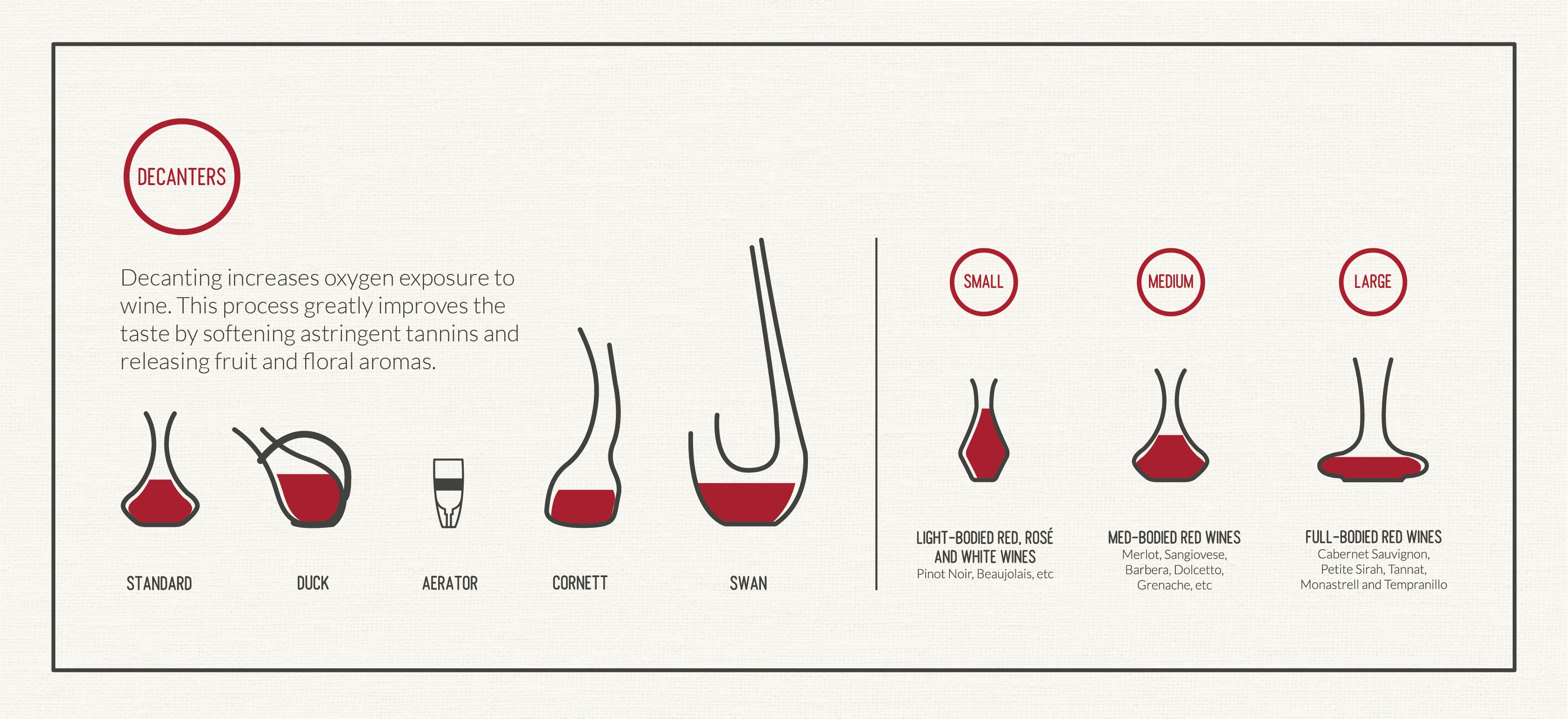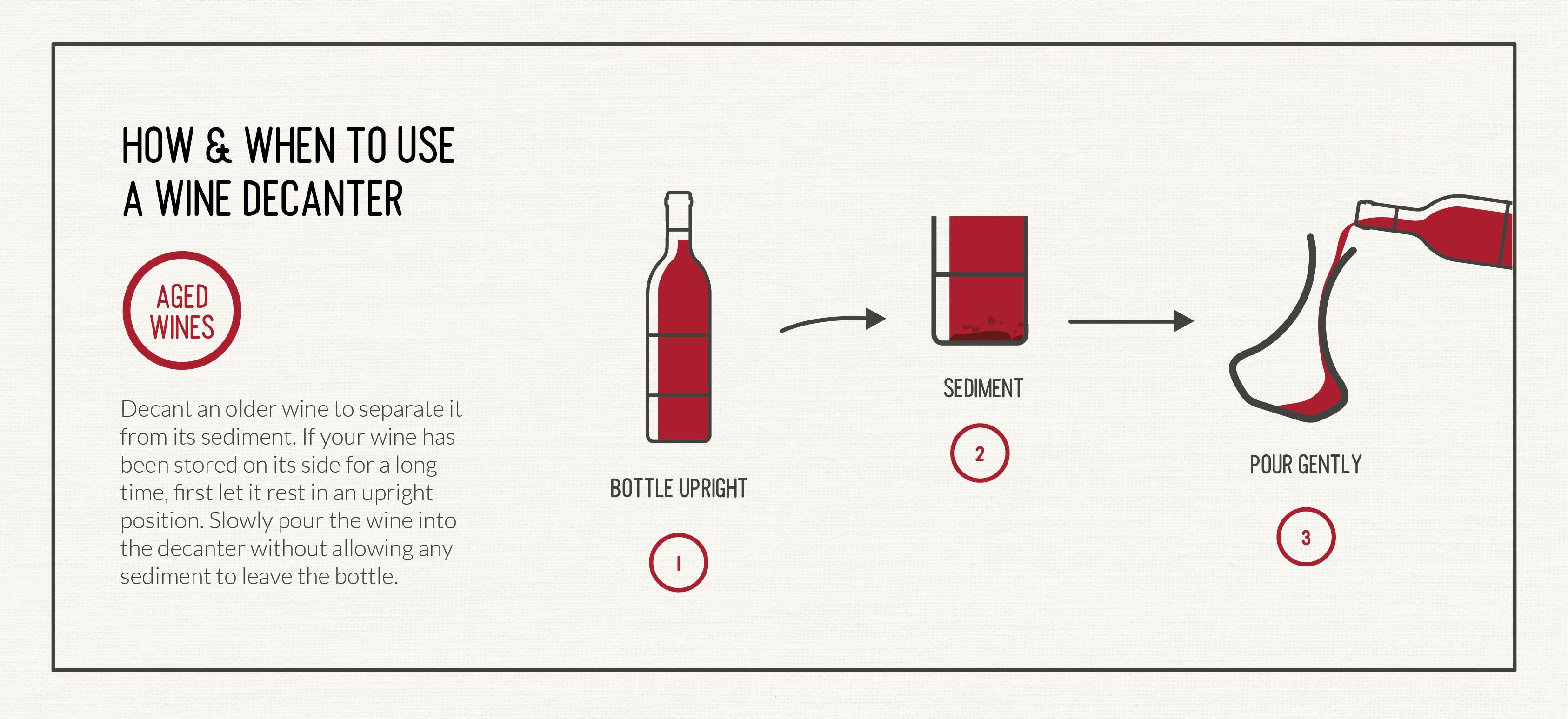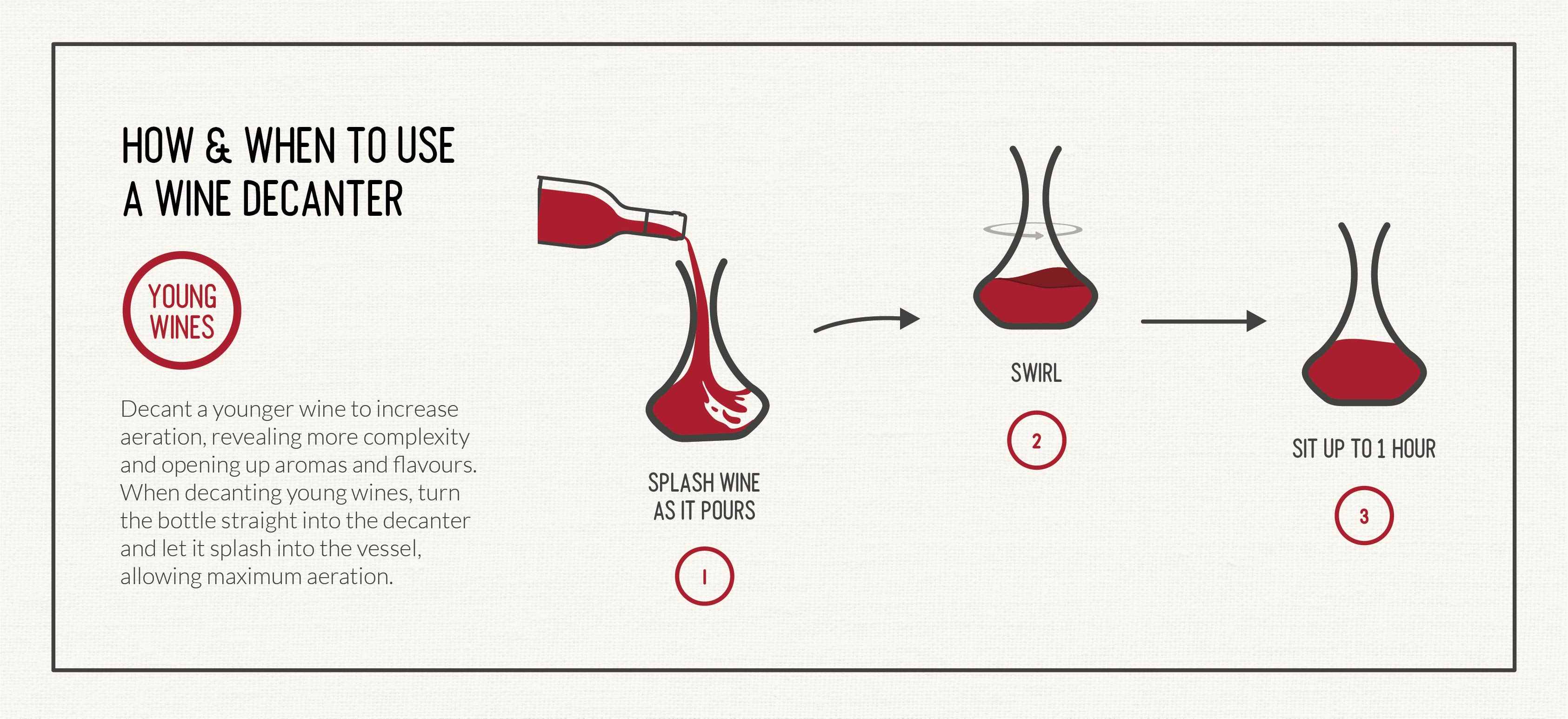
Wine
Panel's Tip: How To Decant Wine
You’ve probably seen a wine decanter in action, but what is a wine decanter, exactly? Is there more to it than just a stylish way to serve wine? What is the proper method of decanting wine? Does wine in a decanter taste better? Let’s find out!
What is a Wine Decanter?
A wine decanter is a vessel, often made of glass or crystal, designed to hold wine for aeration and separation from sediment. It helps enhance the wine’s flavour by allowing it to "breathe," exposing it to oxygen and releasing its full aroma and taste.
Wine feeds on the increased oxygen when it’s aerated, giving it the best chance to open up. This allows the fruit and florals to prosper, the structure and tannins to soften, and the wine to be in optimum tasting condition. Decanting wine also aids in removing sediment, particularly from aged wine.
What are the benefits of decanting wine?


There are two main reasons why you would decant your wine. Firstly, with an aged wine - to remove sediment. And secondly, with a young wine - to open it up and allow it to breathe and release flavour and aromas.
Explains Tasting Panellist, winemaker and wine show judge, Dave Mavor, on why you should decant a wine.
In the past, a wine with a cork that was deemed worthy or of good providence was meant to be decanted, but the advent of the screwcap has changed all this. It’s the newer bottles in your cellar, the ones you put aside for immediate drinking, which are the ones that can benefit from a little TLC in a wine decanter.
As screwcapped wines arrive tighter and more fine-boned than their predecessors under cork, a bit of air can help release primary fruit and aid texture.
The benefits of using a wine decanter are clear: it improves fruit expression, softens the wine’s structure, and ensures the best possible tasting conditions. So, if you're wondering if wine decanters are worth it, the answer is yes — especially for certain wines like Cabernet Sauvignon, Tempranillo, and Shiraz, which benefit from a little extra time to open up.
What are the different types of WINE Decanters?
Decanters come in various shapes, sizes, and designs, including standard, swan, cornett, and duck. So, is a decanter the same as a carafe? The answer is no, as they serve different purposes. While a carafe is for the presentation and serving of your wine, a wine decanter is designed to enable and accelerate the aeration process.
The best wine decanters

What is best shape wine decanter?
The is no one shape that fits all when it comes to wine decanters. Some wines require more time to aerate than others. For instance, full-bodied reds with high tannin levels typically need longer in a decanter. To speed up the aeration process, opt for a decanter with a broad base, as this allows the wine to come into greater contact with oxygen. Here are the types of decanter you need depending on the wine you are drinking:
Full-bodied Reds - If you enjoy full-bodied red wines like Shiraz, Cabernet Sauvignon and Tempranillo, use a red wine decanter with a broad base.
Medium-bodied Reds – If you are drinking wines like Merlot, Sangiovese, Barbera, etc, use a medium-sized red wine decanter.
Light-bodied Reds - For light-bodied wines like Pinot Noir, serve in a chilled small red wine decanter.
White wines and Rosé - Can you decant white wine? Decanting is generally not needed for most White wines and Rosé, as they are typically best enjoyed fresh.
However, aged White wines or full-bodied whites like oaked Chardonnay can benefit from decanting to enhance their complexity. You can also use a small, chilled decanter to serve your White and Rosé wines if needed.
HOW WINE DECANTERS WORK
What is the proper method of decanting wine? Watch the video below as our Tasting Panel expert, Dave Mavor, explains how wine decanters work, their benefits, and how to use them effectively.

How long do you leave wine in a decanter?
In terms of time, newer wines can be left in the decanter to open for a couple of hours. However, older wines do not need more than an hour as they will start to fall away in the decanter, and fruit can be stripped quite quickly. So, can you leave wine in a decanter overnight? It’s best to drink decanted wine within three hours, decanting wine overnight could lead to the wine becoming over-aerated and losing its flavour.
Can you put decanted wine back in the bottle?
Yes, its ok to pour decanted wine back into the bottle but you have to be careful to avoid sediments.
How and When to decant your wine
The best way to decant an older wine is to separate it from its sediment. If your wine has been stored on its side for a long time, first let it rest in an upright position. Slowly pour the wine into the decanter without allowing any sediment to leave the bottle.

The best way to decant a younger wine is to increase aeration, revealing more complexity and opening up aromas and flavours. When decanting young wines, turn the bottle straight into the decanter and let it splash into the vessel, allowing maximum aeration.
Should you aerate cheap, inferior wine?
Yes! Decanting a cheap wine can often help to get rid of the unpleasant odour from the sulphur dioxide. You might even fool your friends into thinking you’re drinking a much more expensive wine.
Wine AERATORS and MENU Wine DECANTERS
You might have heard of wine decanter aerators or the more modern menu wine decanter as quicker alternatives to traditional wine decanting. While many wine enthusiasts enjoy the ritual, elegance, and sense of occasion associated with a classic wine decanter, there's no denying that aerators provide one of the fastest ways to achieve a similar effect.
The science behind this lies in the Venturi effect, where wine poured through a narrow gap increases in velocity, reducing pressure and mixing air with the wine as it flows into the glass. This process enhances oxygen exposure, helping to reveal the wine’s full bouquet and flavour. The menu wine decanter, in particular, is engineered to aerate wine seamlessly as it is poured, making it ideal for young or robust wines that benefit from extra time to open up.
Wine aerators and menu wine decanters are excellent solutions for those who value speed and convenience. If you're enjoying wine solo, an aerator allows you to aerate a single glass rather than decanting the entire bottle.
Wondering how to decant wine without a decanter? If you don’t have a decanter, you can pour the wine into a pitcher, a carafe, or even a clean jug, which will achieve the purpose of the decanter at its most basic level. Whether you opt for an aerator, a traditional decanter, or even a simple carafe, giving your wine room to breathe can make all the difference.
And there you have it — your ultimate crash course in decanting wine! Ready to level up your wine game? Dive into our Wine 101 articles for more tips, tricks, and secrets to uncorking maximum enjoyment with every sip!